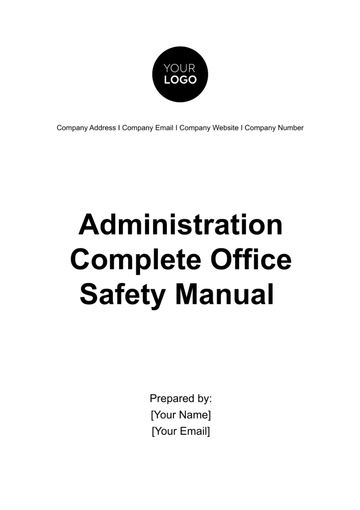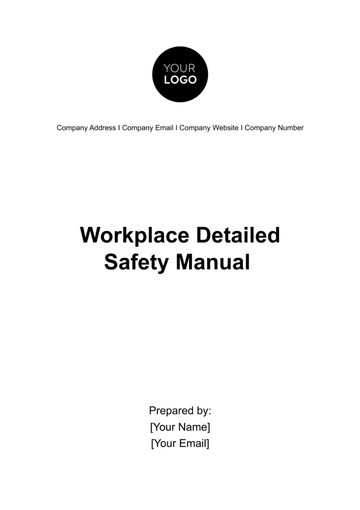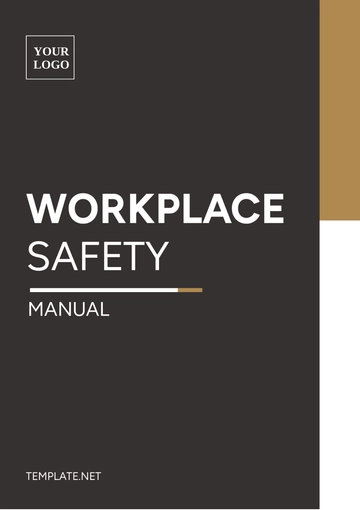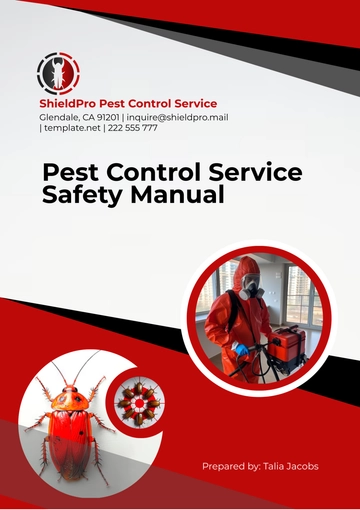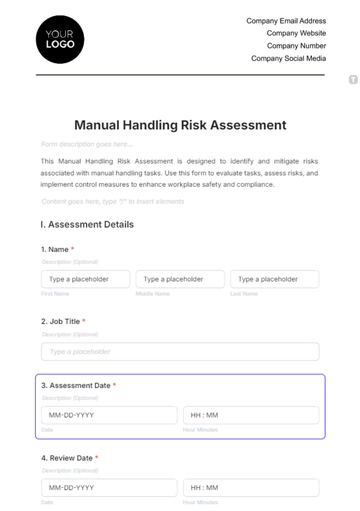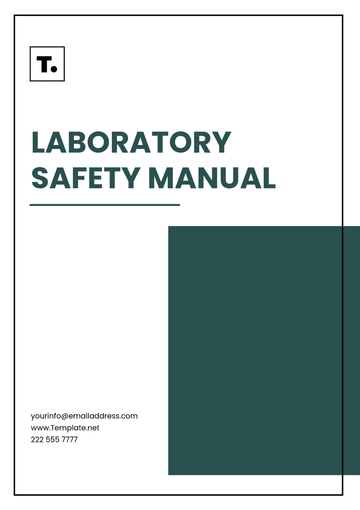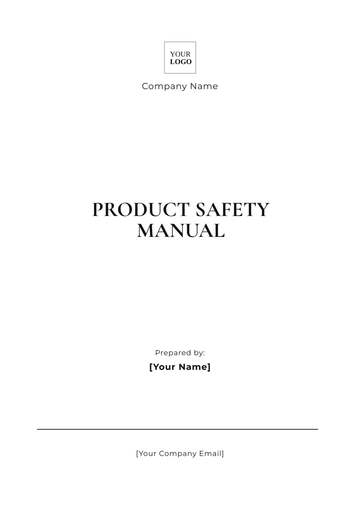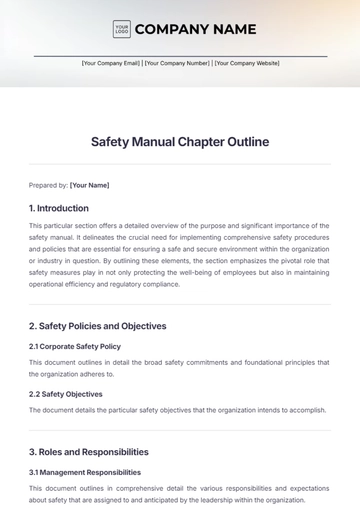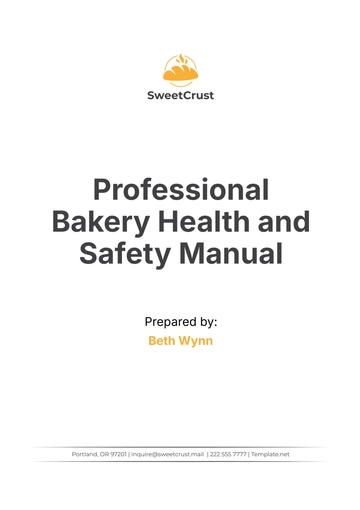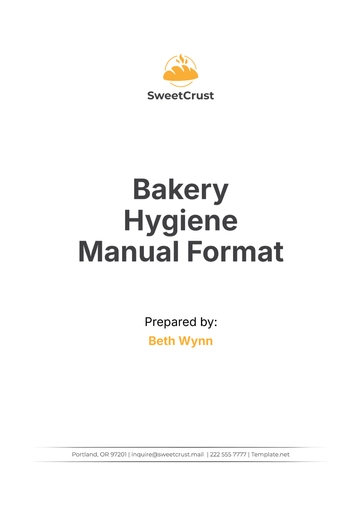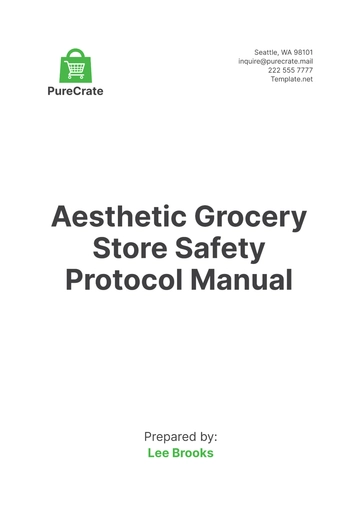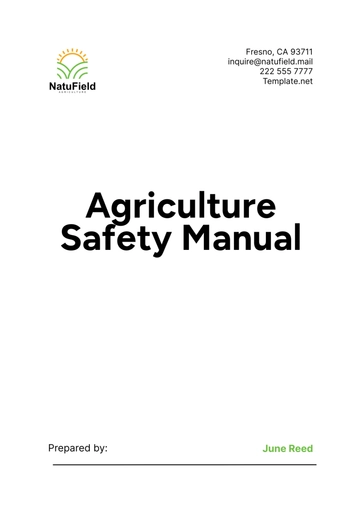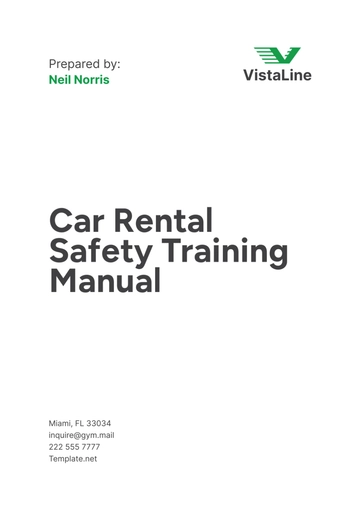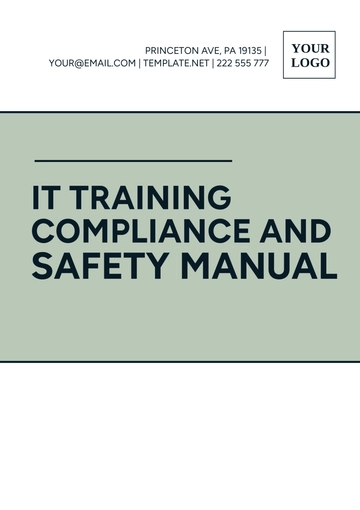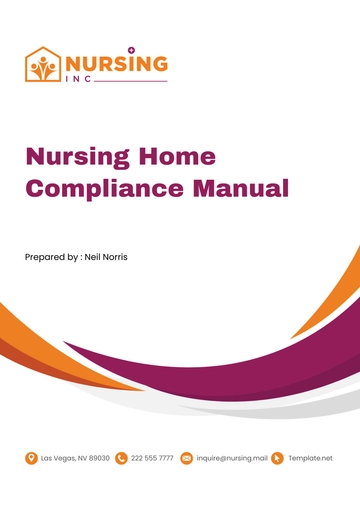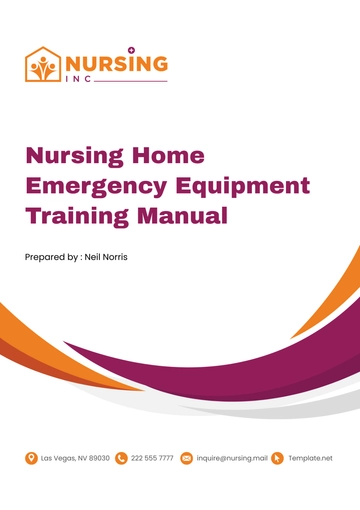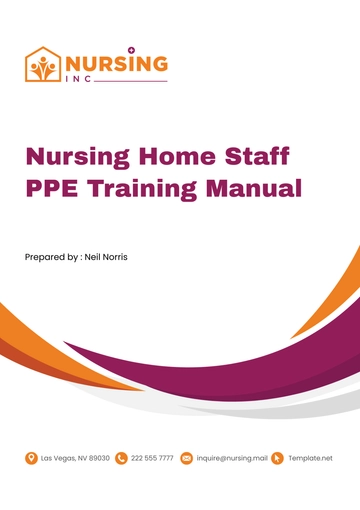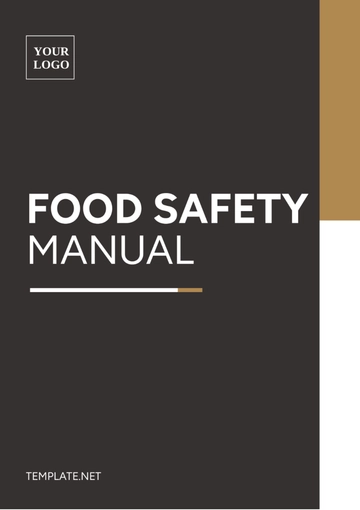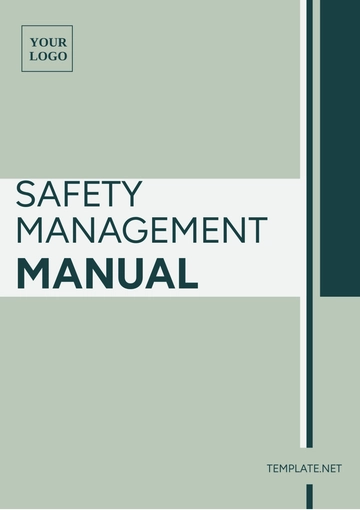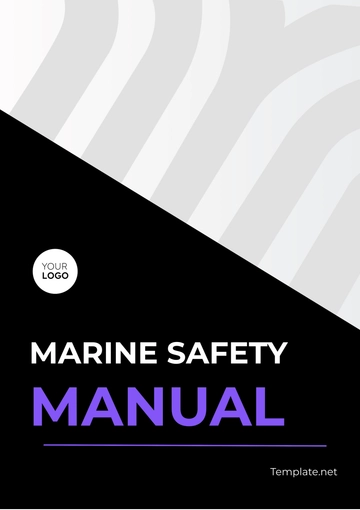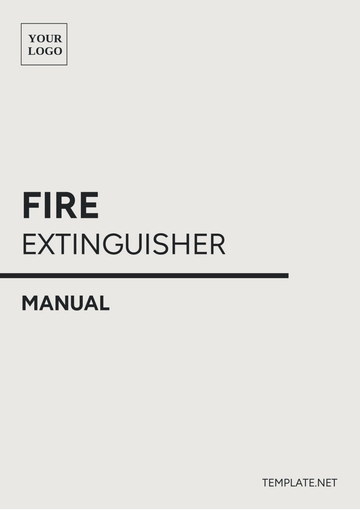Free First Aid and CPR Training Manual HR
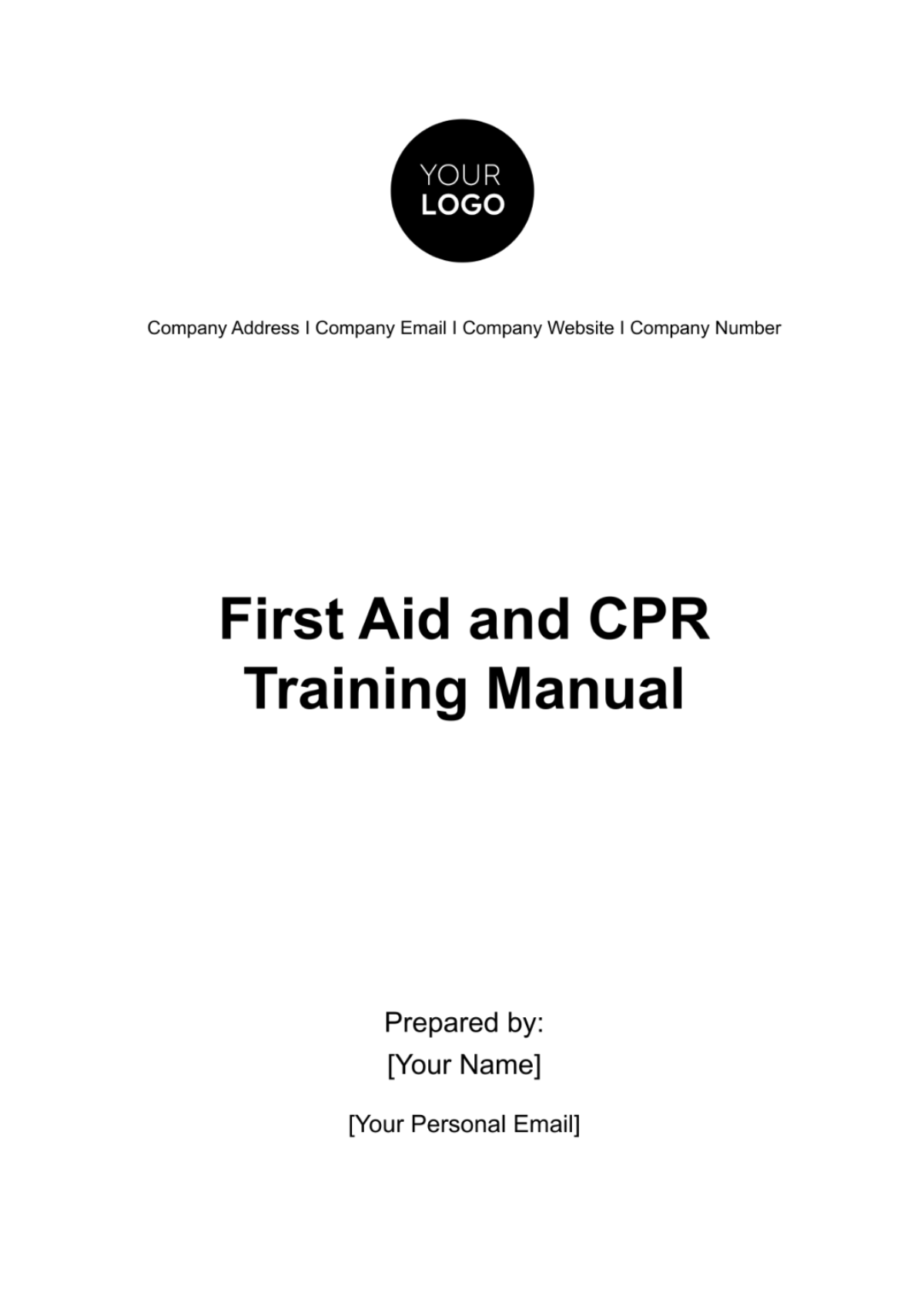
Message from HR Supervisor
Dear [Your Company Name] Team,
I am delighted to introduce the latest edition of our First Aid and CPR Training Manual. As the HR Supervisor, I am passionate about ensuring the safety and well-being of our employees. This manual is a testament to our dedication to your safety.
In today's fast-paced world, being prepared to respond to emergencies is not just a valuable skill; it's a responsibility we all share. Whether at home, at work, or in the community, having the knowledge and confidence to act swiftly in a crisis can make a critical difference.
This manual has been carefully designed to provide you with the most up-to-date information and practical guidance on first aid and CPR. It is not just about checking off a training requirement; it's about equipping you with the skills to save lives.
As you embark on this training journey, remember that you are not just enhancing your own safety; you are becoming a valuable resource for those around you. Your actions in an emergency could be the lifeline someone desperately needs.
I encourage you to approach this training with dedication and enthusiasm. The knowledge you gain will not only benefit you but also contribute to a safer workplace and community. Together, we can make a real impact on the lives of others.
Thank you for your commitment to safety, and I wish you a successful and fulfilling training experience.
Sincerely,
[Your Name]
HR Supervisor
[Your Company Name]
Introduction
Welcome to the [Your Company Name] First Aid and CPR Training Manual. This manual has been created to provide you with essential knowledge and skills in emergency first aid and cardiopulmonary resuscitation (CPR). Our commitment to safety and well-being extends not only to our employees but also to the broader community. We believe that being prepared to respond to medical emergencies is a fundamental skill.
Mission Statement
At [Your Company Name], our mission is to prioritize the safety and well-being of our employees and the communities we serve. We believe that every individual should be equipped with the knowledge and skills to respond effectively in emergency situations. This First Aid and CPR Training Manual is a reflection of our commitment to promoting a culture of preparedness, ensuring that our employees are confident and capable responders in times of need.
Vision Statement
Our vision at [Your Company Name] is to be a leader in workplace safety and emergency preparedness. We aspire to create a workforce that is not only highly skilled but also deeply committed to saving lives. By providing comprehensive first aid and CPR training, we aim to extend our impact beyond our organization, making our communities safer and more resilient.
How to Use This Manual
This First Aid and CPR Training Manual is designed to be a comprehensive resource for understanding and applying first aid and CPR techniques. It includes detailed instructions, illustrations, and step-by-step guides to help you respond effectively to various medical emergencies. Please review this manual carefully, and if you have any questions or need further assistance, do not hesitate to reach out to our Training and Safety team.
Training Objectives
The primary objectives of this training manual are to:
Equip you with the knowledge and skills to provide basic first aid in emergency situations.
Teach you how to perform high-quality CPR in accordance with the latest guidelines.
Increase your confidence in responding to medical emergencies.
Ensure that you are prepared to act swiftly and effectively when someone's life is at risk.
Training Outline
This comprehensive training manual has been thoughtfully organized into a series of detailed sections, each designed to provide you with a comprehensive understanding of first aid and CPR. Let's delve into each of these sections to grasp the depth of knowledge and skills you will acquire:
Introduction to First Aid and CPR: This section serves as your foundation, offering an in-depth overview of the paramount importance of first aid and CPR. You will also explore legal considerations related to providing assistance in emergency situations and gain a clear understanding of the critical role you play as a responder.
Assessment and Emergency Action: Here, you will learn the crucial skills of assessing an emergency scene. You will gain the ability to swiftly recognize life-threatening situations, enabling you to take appropriate and potentially life-saving actions. These skills are not just valuable; they are essential in situations where every second counts.
Cardiopulmonary Resuscitation (CPR): In this section, we will provide you with comprehensive instructions on performing CPR for individuals of all age groups, including adults, children, and infants. You will learn the correct techniques, the importance of effective chest compressions, and how to use automated external defibrillators (AEDs) when available.
Choking: Choking incidents can occur at any age, and knowing how to respond is critical. This section will equip you with the necessary guidance to respond to choking incidents effectively. You will learn the specific techniques required for different age groups, ensuring that you can act with confidence and precision.
Bleeding and Wound Care: Understanding how to control bleeding and provide basic wound care is a fundamental aspect of first aid. In this section, you will acquire the knowledge and skills needed to manage bleeding effectively, prevent infection, and promote wound healing.
Shock: Shock is a potentially life-threatening condition that requires prompt intervention. This section will deepen your understanding of shock, enabling you to recognize its signs and manage it effectively. Your ability to respond to shock can make a significant difference in an emergency situation.
Burns: Burns can range from minor to severe, and each requires a specific approach. You will learn how to assess burns of varying degrees and treat them appropriately. Understanding the different types of burns and their treatments is crucial for providing effective care.
Fractures and Dislocations: Dealing with bone fractures and joint dislocations can be challenging. This section will equip you with the knowledge and skills needed to recognize these injuries, provide initial care, and minimize further damage. Proper management of fractures and dislocations is essential for a successful recovery.
Medical Emergencies: Medical emergencies, such as heart attacks, strokes, seizures, and allergic reactions, require precise responses. You will receive guidance on how to recognize and respond to these specific medical emergencies, ensuring that you can take immediate action when needed.
Environmental Emergencies: Extreme temperatures and environmental factors can pose significant risks. This section will help you recognize and respond to environmental emergencies, such as heatstroke, hypothermia, and exposure to hazardous substances. Your ability to address these situations is crucial for preventing further harm.
Poisoning and Chemical Exposure: Understanding how to handle poisonings and chemical exposures safely is paramount. This section will provide you with guidance on identifying and responding to these situations, ensuring that you can take appropriate steps to minimize harm.
First Aid Kit: A well-equipped first aid kit is an essential tool in any emergency. You will learn how to assemble and maintain a first aid kit with the necessary supplies to address a wide range of injuries and medical situations. Being prepared with the right tools can make a significant difference in your ability to provide effective care.
Certification: Successful completion of this training program will qualify you for a [Your Company Name] First Aid and CPR Certification. Your certification demonstrates your commitment to safety and your readiness to respond effectively in emergencies. It is a valuable asset both within and outside the workplace.
As you progress through each section of this manual, you will not only gain knowledge but also the confidence to act decisively when faced with an emergency. Your commitment to this training is an investment in your safety, the safety of your colleagues, and the broader community.
We encourage you to explore each section thoroughly, engage actively in practical exercises, and ask questions as needed. Together, we can create a safer and more prepared environment for all.
Lesson 1: Introduction to First Aid and CPR
First Aid and Cardiopulmonary Resuscitation (CPR) are critical skills that can save lives in emergency situations. This section provides an overview of what First Aid and CPR are, why they are important, and basic steps that anyone can follow to provide assistance until professional medical help arrives.
What is First Aid?
First Aid refers to the immediate care given to an individual who has been injured or is in urgent need of medical attention before the arrival of professional medical services. It includes simple medical techniques that can be performed with limited equipment and is aimed at relieving pain, preventing further injury, and preserving life.
What is CPR?
Cardiopulmonary Resuscitation (CPR) is a lifesaving technique used in emergencies when someone's breathing or heartbeat has stopped. CPR combines chest compressions and artificial ventilation to maintain circulatory flow and oxygenation during cardiac arrest.
Why are First Aid and CPR Important?
Immediate First Aid and CPR can be the difference between life and death in many cases.
Proper First Aid can prevent a condition from worsening and promote quicker recovery.
Knowing First Aid and CPR empowers individuals to act in emergency situations rather than feeling helpless.
Basic Steps of First Aid
Always make sure the scene is safe for you, the victim, and any bystanders before offering help.
If the situation is serious, call emergency services immediately.
Quickly assess the victim to understand the nature of their injury or condition.
Follow the appropriate steps to care for the victim until help arrives. This may include controlling bleeding, applying bandages, or performing CPR.
Basic Steps of CPR
CPR is performed when a person has stopped breathing or their heart has stopped beating. Follow these steps:
Gently tap the person and shout to see if they respond. If there's no response, call emergency services and begin CPR.
Place the heel of one hand on the center of the person’s chest, with your other hand on top. Press down hard and fast, at a rate of 100 to 120 compressions per minute.
After 30 compressions, give 2 rescue breaths if you are trained to do so. Tilt the head back, lift the chin, and breathe into the person’s mouth.
Repeat the cycle of 30 compressions and 2 rescue breaths until emergency services arrive or the person shows signs of life.
Conclusion
First Aid and CPR are invaluable skills that everyone should learn. They enable you to provide critical assistance in emergencies, potentially saving lives and improving outcomes for those in need. Remember, the key is to act promptly and confidently.
Lesson 2: Assessment and Emergency Action
In this lesson, we will explore how to properly assess an emergency situation and the initial actions that should be taken to ensure the safety and well-being of all involved. This lesson is fundamental for anyone looking to become proficient in first aid and CPR, as it lays the groundwork for all subsequent emergency care actions.
Step 1: Scene Safety
Before you approach the victim, always ensure the scene is safe for you, the victim, and bystanders. Hazards such as fire, toxic gas, or unstable structures require you to wait for professional responders.
Step 2: Assess the Situation
Look for clues about what happened. This information can guide your actions and what kind of assistance to provide. Gently tap the person’s shoulder and shout, “Are you okay?” to assess their level of consciousness.
Step 3: Call for Help
If the situation is severe or you're unsure, call emergency services immediately. Provide them with:
Your location
Nature of the emergency
Number of people involved
Condition of the victim(s)
Any immediate help being provided
Step 4: ABCs of Primary Assessment
Follow the ABCs to identify and address life-threatening conditions:
A - Airway: Ensure the airway is open. If the victim is unconscious, gently tilt their head back and lift their chin to open the airway.
B - Breathing: Check for breathing. Look, listen, and feel for no more than 10 seconds. If there’s no breathing, prepare to start CPR.
C - Circulation: If the victim is not breathing, commence chest compressions to promote blood circulation.
Step 5: Provide Immediate Care
Based on your assessment, provide the necessary first aid care:
Control bleeding with direct pressure.
Keep the victim warm to prevent shock.
If trained, administer CPR if the victim is not breathing.
Step 6: Continue to Monitor
Keep monitoring the victim’s condition for any changes. If they are conscious, reassure them help is on the way. Do not provide food or drink, especially if surgery may be required.
Emergency Action Plan
An effective emergency action plan includes:
Stay calm and think clearly. Panic can worsen the situation.
Communicate with emergency services, bystanders, and victim (conscious).
If possible, document the victim’s condition and any care provided. This information can be crucial for emergency responders.
Conclusion
Assessment and emergency action are crucial first steps in responding to any emergency situation. They lay the foundation for effective first aid and CPR, guiding the responder through the process of ensuring safety, evaluating the victim, calling for help, and providing initial care. This knowledge empowers individuals to make a significant difference in the outcome of emergency situations.
Employee Implications
As an employee of [Your Company Name], engaging in this First Aid and CPR training carries several important implications:
Responsibility: You are taking on the responsibility of being a capable first responder in emergencies, both at work and in your personal life.
Confidence: Through this training, you will gain the confidence to take immediate action when faced with life-threatening situations, potentially saving lives.
Community Impact: Your training extends beyond the workplace; it allows you to make a positive impact on the safety of your community.
Career Enhancement: Possessing first aid and CPR skills can enhance your career and job prospects, as many employers value employees with such qualifications.
Leadership: You become a leader in promoting a culture of safety within the organization, setting an example for your colleagues.
Future Developments
Looking ahead, [Your Company Name] is committed to ongoing improvements in our safety and emergency preparedness programs. Here are some future developments you can anticipate:
Advanced Training: We plan to offer advanced first aid and CPR training for employees who wish to expand their skills and knowledge further.
Simulation Exercises: Real-life scenario simulations will be introduced to enhance practical training, allowing you to practice your skills in a controlled environment.
Community Outreach: We are exploring opportunities for employees to participate in community outreach programs, where you can share your expertise with local schools, organizations, and community groups.
Mobile Training: We are working on developing mobile training applications that will enable you to refresh your knowledge and skills at your convenience.
Certification Renewal: As part of our commitment to keeping our workforce prepared, we will implement certification renewal programs to ensure that your skills remain current.
Conclusion
We are committed to your safety and the safety of those around you. This First Aid and CPR Training Manual is a valuable resource that equips you with the skills and knowledge to make a difference in emergency situations. By becoming a certified first aider, you are taking an important step towards creating a safer workplace and community.
Thank you for your dedication to safety and your commitment to being a responsible and prepared responder.
[Your Name]
Training and Safety Manager
[Your Company Name]
Disclosure Statement
This First Aid and CPR Training Manual is intended solely for the training and educational purposes of [Your Company Name] employees and authorized personnel. The content contained within this manual is provided as general guidance and does not constitute medical advice or a substitute for professional medical training.
Readers are encouraged to exercise caution and seek professional medical assistance when faced with medical emergencies. [Your Company Name] shall not be held liable for any actions taken based on the information contained in this manual.
This manual may be subject to periodic updates and revisions to reflect changes in best practices, guidelines, and regulations related to first aid and CPR. Users are advised to refer to the most current version of this manual for accurate and up-to-date information.
Acknowledgment
I, [Employee Name], acknowledge that I have received the [Your Company Name] First Aid and CPR Training Manual. I understand that this manual contains valuable information on first aid and CPR techniques and is a vital resource for my training and development in emergency response.
By acknowledging receipt of this manual, I confirm my commitment to actively engage in this training and to acquire the knowledge and skills necessary to respond effectively to medical emergencies. I understand that this training is not only for my benefit but also for the safety and well-being of my colleagues and the community at large.
I am aware that the successful completion of this training program will qualify me for a [Your Company Name] First Aid and CPR Certification, and I am committed to fulfilling the requirements of this certification.
[Employee Name]
[Employee Signature]
[Month Day, Year]
- 100% Customizable, free editor
- Access 1 Million+ Templates, photo’s & graphics
- Download or share as a template
- Click and replace photos, graphics, text, backgrounds
- Resize, crop, AI write & more
- Access advanced editor
Explore the First Aid and CPR Training Manual HR Template on Template.net. Crafted for HR departments, this template is highly editable and customizable, enabling you to create a comprehensive training manual that meets your organization's specific needs. With the capability to modify it in our AI Editor tool, it's the perfect guide for equipping your team with essential first aid and CPR skills.

